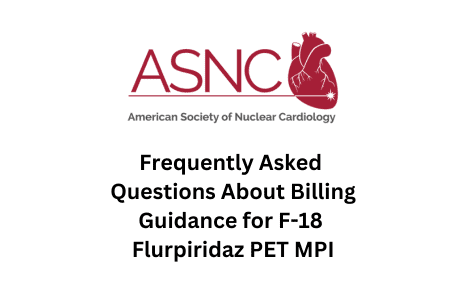Dear Colleagues,
The nuclear cardiology community is being challenged by shortages of key materials needed for patient-centered nuclear imaging. ASNC has been closely monitoring these shortages and is in contact with vendors around the world. We want to give you an update on where the issues stand and share resources available to help support you during this time.
Technetium Shortage
ASNC’s latest update on Mo-99 supply is available here.
To summarize, a deformation in a pipe in the high-flux reactor (HFR) in Petten, Netherlands, requires an immediate fix rather than the planned repair scheduled for December 2024. Unfortunately, this timing coincides with planned shutdowns for several other reactors and has led to the current issues with technetium supply.
According to an announcement made yesterday by the Nuclear Medicine Europe Emergency Response Team, the HFR reactor is due to restart on Nov. 4, subject to regulatory approval.
In the meantime, we know many labs are facing technetium dose restrictions. Here are some recommendations to help you get through the shortage:
- Consider using a stress first/stress-only imaging protocol. This will potentially decrease the amount of technetium needed by avoiding the need for a rest dose of technetium in patients with normal left ventricular perfusion, function, and size on stress-first images. It will also allow separation of the two phases of the test, reducing activity for the second phase by performing low-dose stress and rest imaging, if needed, on subsequent days. The ASNC guideline on testing protocols is available here and covers this concept.
- Consider increasing utilization of positron emission tomography (PET) or other clinically appropriate testing, if available.
- Consider reducing the per-patient activity. Remember, you will need to increase the acquisition time to maintain the same quality of images.
- Defer non-essential testing until the shortage improves.
99mTc-pyrophosphate Shortage
ASNC reported on difficulties with the supply of 99mTc-pyrophosphate (PYP) this summer. Those challenges resulted from a supplier that stopped producing a component of the product. As a result, many labs have decided to change their imaging bone agent in cardiac amyloid radionuclide imaging from PYP to 99mTechnetium (99mTc)-hydroxymethylene diphosphonate (HMDP or HDP).
Please consider the following resource for handling this shortage:
- The ASNC information statement Radiopharmaceutical Supply Disruptions and the Use of 99mTc-Hydroxymethylene Diphosphonate as an Alternative to 99mTc-Pyrophosphate for the Diagnosis of Transthyretin Cardiac Amyloidosis provides guidance for making this switch.
- Please note, some labs have reported more rapid washout with HMDP/HDP vs. PYP. Consider using a shorter injection-to-imaging time to optimize your imaging protocol.
We all are feeling the challenges that come with these shortages. ASNC is monitoring the evolving situation and will continue advocating for you, the nuclear cardiology community. Please stay tuned to ASNC for updates and send your questions to info@ASNC.org.
Sincerely,
Lawrence Phillips, MD, MASNC
ASNC President
Article Type
Updates
Category
Advocacy, Guidelines & Quality
Related Posts
‘One Big Beautiful Bill’ Signed into Law, Includes Pay Bump for Physicians
President Trump signed H.R. 1, the One Big Beautiful Bill Act, into…
Frequently Asked Questions About Billing Guidance for F-18 Flurpiridaz PET MPI
This content is an exclusive benefit for ASNC members. If you’re an…
ASNC to AMA: Support Legislation Increasing Oversight of Insurers’ Artificial Intelligence Use
At last week’s American Medical Association House of Delegates (AMA HOD) meeting…




